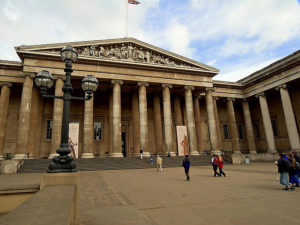Yet again, this is another installment in the series of unfortunate events plaguing the British Museum since August. Previously, the museum announced it had fired one of its most senior staff members. This employee, a curator named Peter John Higgs, is suspected of taking advantage of the museum’s lack of transparency and toxic institutional culture of secrecy to steal around two thousand items from the museum store rooms and archives. The museum director resigned earlier than anticipated, and now the administration must deal with the fallout. In this most recent development, the museum seems to be taking a step in the right direction for once. The new interim director, Mark Jones, and the museum chairman George Osborne have stated that the museum will be overhauling its efforts to completely catalogue and digitize their collections.
On the same day the British Museum made this announcement, Jones and Osborne testified before the parliamentary committee on culture, media, and sport. There, they explained how this entire situation came to be and what steps the administration would take to resolve the matter and prevent similar incidents. Jones and Osborne estimate that processing the 2.4 million uncatalogued items and updating the pre-existing entries will take about five years and cost £10 million. But even though the British Museum is owned and operated by the British government, the museum has made it perfectly clear that, given the circumstances, this project will not use any public money. Osborne said, “We are not asking the taxpayer or the Government for the money; we hope to raise it privately”. On top of the cataloging project, the museum plans to change certain rules about archive and storeroom accessibility. Under these new rules, anyone can make an appointment to examine items in museum storage. However, the museum is also planning on tightening its supervision. From now on, researchers, museum staff, or members of the public there by appointment will no longer be able to enter storerooms by themselves.
The British Museum has already recovered about 350 of the estimated 2,000 items stolen. To help, the museum put out an announcement reading, “If you are concerned that you may be, or have been, in possession of items from the British Museum, or if you have any other information that may help us, please contact us at recovery@britishmuseum.org”. It’s a little unnerving that a major cultural institution is resorting to crowdsourcing to find gems and ancient artifacts. But I think it shows how few options the British Museum has left in the wake of the scandal.

